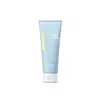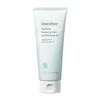What's inside
What's inside
 Key Ingredients
Key Ingredients

 Benefits
Benefits

 Concerns
Concerns

 Ingredients Side-by-side
Ingredients Side-by-side

Water
Skin ConditioningGlycerin
HumectantCocamidopropyl Betaine
CleansingPropanediol
SolventPotassium Cocoyl Glycinate
Acrylates Copolymer
Polyglyceryl-4 Caprate
EmulsifyingHydroxypropyl Starch Phosphate
Sodium Chloride
Masking1,2-Hexanediol
Skin ConditioningLactic Acid
BufferingPotassium Cocoate
EmulsifyingEthylhexylglycerin
Skin ConditioningCitrus Aurantium Bergamia Fruit Oil
MaskingLavandula Angustifolia Oil
MaskingButylene Glycol
HumectantRosmarinus Officinalis Leaf Oil
MaskingCentella Asiatica Extract
CleansingPelargonium Graveolens Flower Oil
MaskingGardenia Florida Fruit Extract
Skin ConditioningCitrus Nobilis Peel Oil
MaskingMaltodextrin
AbsorbentBifida Ferment Lysate
Skin ConditioningHyaluronic Acid
HumectantGuaiazulene
AntimicrobialSqualane
EmollientCitric Acid
BufferingAllantoin
Skin ConditioningTocopherol
AntioxidantPanthenol
Skin ConditioningHydrolyzed Collagen
EmollientHamamelis Virginiana Leaf Water
AstringentHydrolyzed Hyaluronic Acid
HumectantCamellia Sinensis Leaf Extract
AntimicrobialJuniperus Communis Fruit Extract
PerfumingMelissa Officinalis Leaf Extract
Skin ConditioningSaponaria Officinalis Root Extract
Skin ConditioningSalvia Officinalis Leaf Extract
CleansingHouttuynia Cordata Extract
Skin ConditioningMentha Piperita Leaf Extract
Skin ConditioningViscum Album Leaf Extract
SoothingSodium Hyaluronate
HumectantCaprylic/Capric Triglyceride
MaskingAdansonia Digitata Seed Oil
EmollientHydrogenated Lecithin
EmulsifyingCeramide NP
Skin ConditioningCalendula Officinalis Extract
Skin ConditioningPropolis Extract
Skin ConditioningPalmitoyl Tripeptide-5
Skin ConditioningTocopheryl Acetate
AntioxidantRutin
AntioxidantHydroxycinnamic Acid
Skin ConditioningArtemisia Vulgaris Extract
Skin ConditioningMentha Rotundifolia Leaf Extract
TonicCeramide Ns
Skin ConditioningCeramide As
Skin ConditioningCeramide EOP
Skin ConditioningCeramide AP
Skin ConditioningMelaleuca Alternifolia Leaf Extract
PerfumingOligopeptide-1
Skin ConditioningDisodium EDTA
Limonene
PerfumingLinalool
PerfumingWater, Glycerin, Cocamidopropyl Betaine, Propanediol, Potassium Cocoyl Glycinate, Acrylates Copolymer, Polyglyceryl-4 Caprate, Hydroxypropyl Starch Phosphate, Sodium Chloride, 1,2-Hexanediol, Lactic Acid, Potassium Cocoate, Ethylhexylglycerin, Citrus Aurantium Bergamia Fruit Oil, Lavandula Angustifolia Oil, Butylene Glycol, Rosmarinus Officinalis Leaf Oil, Centella Asiatica Extract, Pelargonium Graveolens Flower Oil, Gardenia Florida Fruit Extract, Citrus Nobilis Peel Oil, Maltodextrin, Bifida Ferment Lysate, Hyaluronic Acid, Guaiazulene, Squalane, Citric Acid, Allantoin, Tocopherol, Panthenol, Hydrolyzed Collagen, Hamamelis Virginiana Leaf Water, Hydrolyzed Hyaluronic Acid, Camellia Sinensis Leaf Extract, Juniperus Communis Fruit Extract, Melissa Officinalis Leaf Extract, Saponaria Officinalis Root Extract, Salvia Officinalis Leaf Extract, Houttuynia Cordata Extract, Mentha Piperita Leaf Extract, Viscum Album Leaf Extract, Sodium Hyaluronate, Caprylic/Capric Triglyceride, Adansonia Digitata Seed Oil, Hydrogenated Lecithin, Ceramide NP, Calendula Officinalis Extract, Propolis Extract, Palmitoyl Tripeptide-5, Tocopheryl Acetate, Rutin, Hydroxycinnamic Acid, Artemisia Vulgaris Extract, Mentha Rotundifolia Leaf Extract, Ceramide Ns, Ceramide As, Ceramide EOP, Ceramide AP, Melaleuca Alternifolia Leaf Extract, Oligopeptide-1, Disodium EDTA, Limonene, Linalool
Water
Skin ConditioningGlycerin
HumectantMyristic Acid
CleansingStearic Acid
CleansingPEG-32
HumectantPotassium Hydroxide
BufferingPalmitic Acid
EmollientButylene Glycol
HumectantLauric Acid
CleansingCocamidopropyl Betaine
CleansingGlyceryl Stearate
EmollientPEG-100 Stearate
Parfum
MaskingTorreya Nucifera Seed Oil
EmollientSodium Chloride
MaskingSalicylic Acid
MaskingMenthol
MaskingSodium Hydroxide
BufferingDisodium EDTA
Sodium Benzoate
MaskingDextrin
AbsorbentTheobroma Cacao Extract
Skin ConditioningRosa Centifolia Flower Extract
AstringentLactic Acid
BufferingWater, Glycerin, Myristic Acid, Stearic Acid, PEG-32, Potassium Hydroxide, Palmitic Acid, Butylene Glycol, Lauric Acid, Cocamidopropyl Betaine, Glyceryl Stearate, PEG-100 Stearate, Parfum, Torreya Nucifera Seed Oil, Sodium Chloride, Salicylic Acid, Menthol, Sodium Hydroxide, Disodium EDTA, Sodium Benzoate, Dextrin, Theobroma Cacao Extract, Rosa Centifolia Flower Extract, Lactic Acid
 Reviews
Reviews

Ingredients Explained
These ingredients are found in both products.
Ingredients higher up in an ingredient list are typically present in a larger amount.
Butylene Glycol (or BG) is used within cosmetic products for a few different reasons:
Overall, Butylene Glycol is a safe and well-rounded ingredient that works well with other ingredients.
Though this ingredient works well with most skin types, some people with sensitive skin may experience a reaction such as allergic rashes, closed comedones, or itchiness.
Learn more about Butylene GlycolCocamidopropyl Betaine is a fatty acid created by mixing similar compounds in coconut oil and dimethylaminopropylamine, a compound with two amino groups.
This ingredient is a surfactant and cleanser. It helps gather the dirt, pollutants, and other impurities in your skin to be washed away. It also helps thicken a product and make the texture more creamy.
Being created from coconut oil means Cocamidopropyl Betaine is hydrating for the skin.
While Cocamidopropyl Betaine was believed to be an allergen, a study from 2012 disproved this. It found two compounds in unpure Cocamidopropyl Betaine to be the irritants: aminoamide and 3-dimethylaminopropylamine. High-grade and pure Cocamidopropyl Betaine did not induce allergic reactions during this study.
Learn more about Cocamidopropyl BetaineDisodium EDTA plays a role in making products more stable by aiding other preservatives.
It is a chelating agent, meaning it neutralizes metal ions that may be found in a product.
Disodium EDTA is a salt of edetic acid and is found to be safe in cosmetic ingredients.
Learn more about Disodium EDTAGlycerin is already naturally found in your skin. It helps moisturize and protect your skin.
A study from 2016 found glycerin to be more effective as a humectant than AHAs and hyaluronic acid.
As a humectant, it helps the skin stay hydrated by pulling moisture to your skin. The low molecular weight of glycerin allows it to pull moisture into the deeper layers of your skin.
Hydrated skin improves your skin barrier; Your skin barrier helps protect against irritants and bacteria.
Glycerin has also been found to have antimicrobial and antiviral properties. Due to these properties, glycerin is often used in wound and burn treatments.
In cosmetics, glycerin is usually derived from plants such as soybean or palm. However, it can also be sourced from animals, such as tallow or animal fat.
This ingredient is organic, colorless, odorless, and non-toxic.
Glycerin is the name for this ingredient in American English. British English uses Glycerol/Glycerine.
Learn more about GlycerinLactic Acid is another well-loved alpha hydroxy acid (AHA). It is gentler than glycolic acid but still highly effective.
Its main role is to exfoliate the surface of the skin by loosening the “glue” that holds dead skin cells together. Shedding those old cells leads to smoother, softer, and more even-toned skin.
Because lactic acid molecules are larger than glycolic acid, they don’t penetrate as deeply. This means they’re less likely to sting or irritate, making it a great choice for beginners or those with sensitive skin.
Like glycolic acid, it can:
Lactic acid also acts as a humectant (like hyaluronic acid). It can draw water into the skin to improve hydration and also plays a role in the skin's natural moisturizing factor (NMF) in the form of sodium lactate.
Studies show it can boost ceramide production to strengthen the skin barrier and even help balance the skin’s microbiome.
To get results, choose products with a pH between 3-4.
Lower strengths (5-12%) focus on surface exfoliation; higher strengths (12% and up) can reach deeper in the dermis (deeper, supportive layer) to improve skin texture and firmness over time.
Though it was originally derived from milk, most modern lactic acid used in skincare is vegan. It is made through non-dairy fermentation to create a bio-identical and stable form suitable for all formulations.
When lactic acid shows up near the end of an ingredient list, it usually means the brand added just a tiny amount to adjust the product’s pH.
Legend has it that Cleopatra used to bathe in sour milk to help reduce wrinkles.
Lactic acid is truly a gentle multitasker: it exfoliates, hydrates, strengthens, and brightens. It's a great ingredient for giving your skin a smooth, glowing, and healthy look without the harshness of stronger acids.
Read more about some other popular AHA's here:
Learn more about Lactic AcidChances are, you eat sodium chloride every day. Sodium Chloride is also known as table salt.
This ingredient has many purposes in skincare: thickener, emulsifier, and exfoliator.
You'll most likely find this ingredient in cleansers where it is used to create a gel-like texture. As an emulsifier, it also prevents ingredients from separating.
There is much debate on whether this ingredient is comedogenic. The short answer - comedogenic ratings don't tell the whole story. Learn more about comegodenic ratings here.
The concensus about this ingredient causing acne seems to be divided. Research is needed to understand if this ingredient does cause acne.
Scrubs may use salt as the primary exfoliating ingredient.
Learn more about Sodium ChlorideWater. It's the most common cosmetic ingredient of all. You'll usually see it at the top of ingredient lists, meaning that it makes up the largest part of the product.
So why is it so popular? Water most often acts as a solvent - this means that it helps dissolve other ingredients into the formulation.
You'll also recognize water as that liquid we all need to stay alive. If you see this, drink a glass of water. Stay hydrated!
Learn more about Water